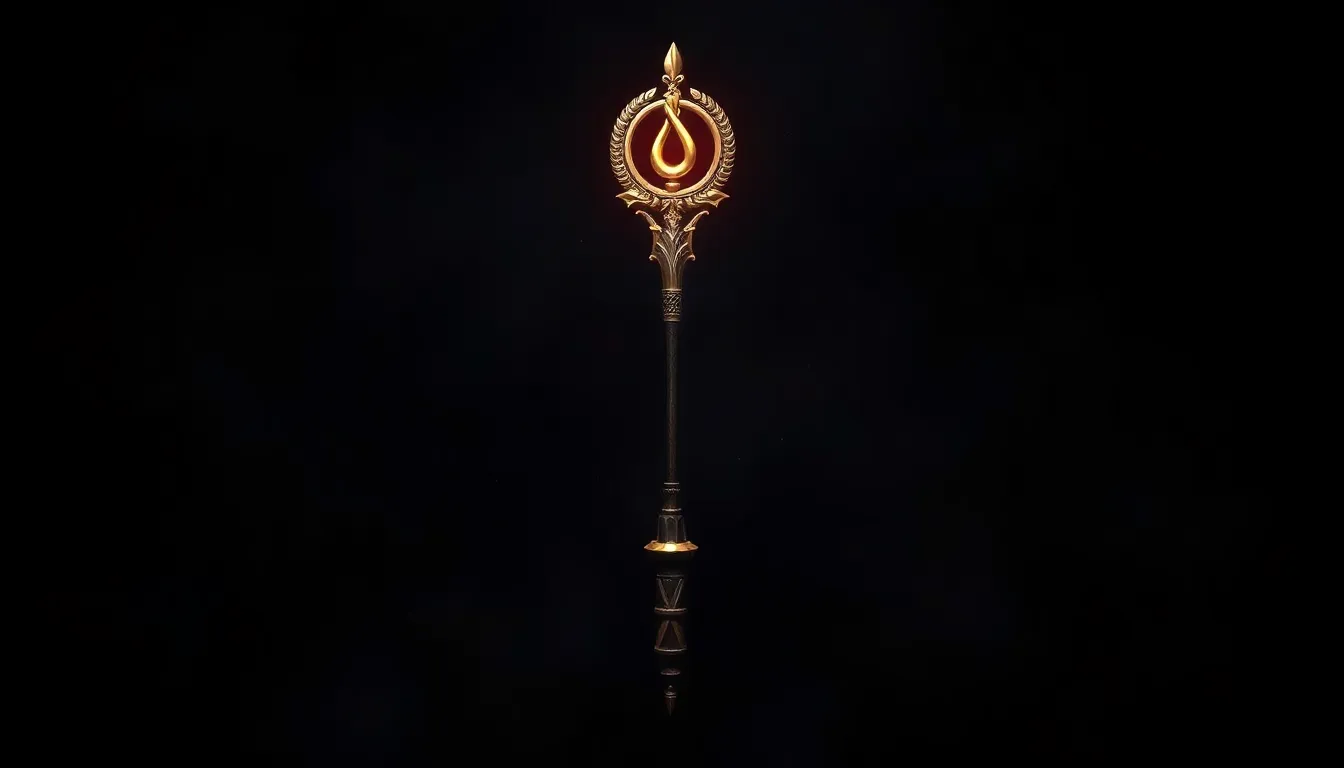The Staff of Hermes: The Messenger’s Mythical Tool
I. Introduction
In the rich tapestry of Greek mythology, Hermes stands out as a multifaceted figure known for his cunning, speed, and eloquence. As the messenger of the gods, he serves a crucial role in the pantheon, delivering messages between the divine and mortal realms. One of the most iconic symbols associated with Hermes is the Staff of Hermes, also known as the caduceus. This article aims to explore the origins, meanings, and modern interpretations of this mythical tool, shedding light on its significance throughout history.
II. The Mythology of Hermes
A. Birth and origins of Hermes
Hermes was born to Zeus and Maia, one of the Pleiades, in a cave on Mount Cyllene. From a young age, he displayed remarkable intelligence and resourcefulness. His birth was marked by a series of unusual events, including the theft of Apollo’s cattle, which showcased his cleverness and foreshadowed his role as a trickster.
B. Role of Hermes as the messenger of the gods
As the herald of the gods, Hermes was responsible for conveying important messages and guiding souls to the afterlife. His swift movements allowed him to traverse the realms of gods and mortals with ease, making him a vital link between the two worlds.
C. Attributes and symbolism associated with Hermes
Hermes is often depicted with several attributes, including:
- The caduceus, his staff
- Winged sandals, symbolizing his speed
- A traveler’s cap, known as a petasos
- A pouch for carrying messages
III. The Caduceus: Description and Characteristics
A. Physical description of the Staff of Hermes
The caduceus is typically depicted as a short staff entwined by two serpents, often with wings at the top. The design symbolizes duality and balance, embodying the harmonious coexistence of opposing forces.
B. Materials and symbolism of the caduceus
Traditionally, the caduceus is portrayed as made of gold or other precious materials, signifying its value and importance. The serpents represent duality, wisdom, and the balance between conflicting forces, while the wings symbolize swiftness and the divine nature of Hermes.
C. Depictions in ancient art and literature
Throughout history, the caduceus has appeared in various forms of ancient art, from pottery to sculptures. In literature, it is often referenced as a powerful symbol of negotiation and peace, further solidifying its significance in Hermes’ mythology.
IV. The Role of the Caduceus in Myth
A. The origin story of the caduceus
According to myth, Hermes received the caduceus after he successfully reconciled a dispute between two serpents, which subsequently entwined around his staff. This act of negotiation not only established him as a mediator but also imbued the caduceus with its symbolic meaning of peace and balance.
B. Key myths involving Hermes and his staff
Several myths highlight the caduceus’s importance, including:
- The story of Hermes guiding souls to the underworld.
- His role in the Trojan War, where he served as a diplomat.
- The tale of Hermes and Apollo, where he uses the caduceus to negotiate peace.
C. The caduceus as a symbol of peace and negotiation
Throughout these myths, the caduceus emerges as a powerful emblem of diplomacy, highlighting Hermes’ role in resolving conflicts and fostering communication among gods and mortals alike.
V. The Caduceus in Ancient Culture
A. Significance in ancient Greek society
In ancient Greece, the caduceus symbolized trade, commerce, and negotiation. Merchants and diplomats often used the staff as a sign of their authority and legitimacy.
B. Use in commerce, trade, and diplomacy
Merchants would carry representations of the caduceus to signify safe passage and fair dealings. Its association with Hermes reinforced the notion of trust in the marketplace and diplomatic relations.
C. Comparison with other mythical symbols
While the caduceus is closely associated with Hermes, other symbols in Greek mythology, such as the trident of Poseidon or the thunderbolt of Zeus, carry their own distinct meanings and purposes. However, the caduceus uniquely embodies negotiation and harmony.
VI. The Caduceus in Modern Context
A. Misinterpretations of the caduceus in contemporary society
In modern times, the caduceus has often been confused with the Rod of Asclepius, which features a single serpent and is the true symbol of medicine. This mix-up has led to widespread misinterpretation of the caduceus in healthcare contexts.
B. Use in medicine and healthcare symbols
Despite the confusion, the caduceus is frequently used in medical logos, leading to misconceptions about its meaning. The caduceus represents negotiation and commerce, while the Rod of Asclepius symbolizes healing and medicine.
C. The distinction between caduceus and Rod of Asclepius
To clarify:
- The caduceus has two serpents and wings, associated with Hermes.
- The Rod of Asclepius has one serpent, representing healing and medicine.
VII. The Symbolism of the Caduceus
A. Duality of the serpents and their meanings
The two serpents wrapping around the caduceus symbolize duality, representing opposing forces such as life and death, good and evil, or conflict and resolution.
B. Interpretation of wings and their implications
The wings of the caduceus symbolize the divine nature of Hermes, emphasizing speed and the ability to transcend earthly limitations.
C. The caduceus as a symbol of balance and harmony
Overall, the caduceus embodies the principles of balance and harmony, illustrating the importance of negotiation and communication in various aspects of life.
VIII. The Caduceus in Popular Culture
A. Representation in literature, films, and art
The caduceus has made numerous appearances in literature, films, and art, often signifying knowledge, wisdom, and negotiation. Its imagery continues to resonate with creators and audiences alike.
B. Influence on modern branding and logos
Many modern brands and organizations have adopted the caduceus for its connotations of commerce and communication, further embedding it into contemporary culture.
C. The caduceus in various cultural contexts
Across different cultures, the caduceus has been embraced as a symbol of balance, negotiation, and commerce, showcasing its universal appeal and significance.
IX. The Legacy of the Staff of Hermes
A. The enduring nature of Hermes’ symbolism
The legacy of Hermes and his caduceus endures in modern society, as the themes of communication, negotiation, and balance remain relevant.
B. Influence on modern philosophies and ideologies
Hermes’ symbolism has influenced various philosophies, particularly in areas relating to trade, diplomacy, and the pursuit of knowledge.
C. The caduceus in contemporary spirituality and healing practices
In contemporary spirituality, the caduceus is sometimes used to represent holistic healing and the balance of energies, reflecting its ancient roots in negotiation and harmony.
<



